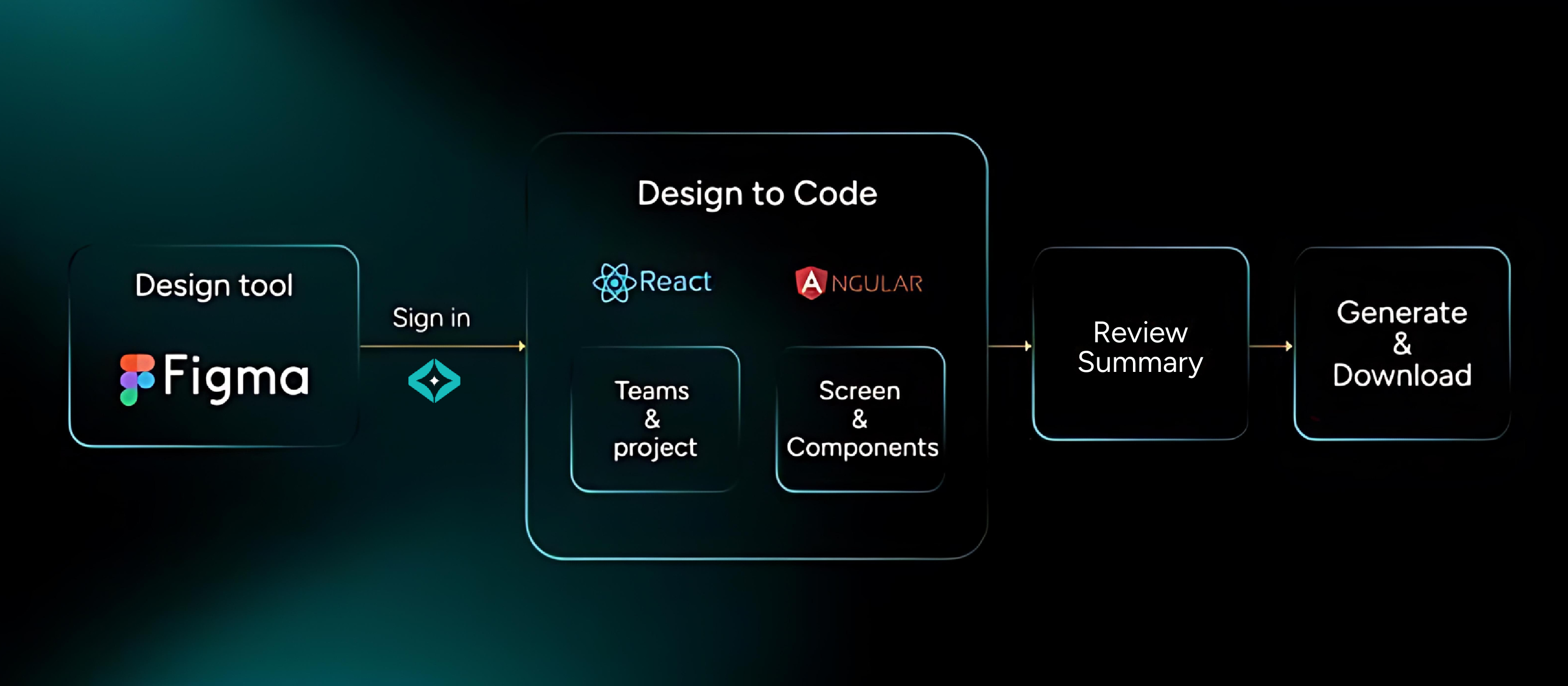July 31, 2025
Design-to-code automation is no longer a luxury - it’s a competitive necessity. With designers working in Figma and developers coding in React, HTML, or CSS, the gap between design and development needs more than just manual handoffs. Fortunately, a new wave of Figma to code tools is helping bridge that gap.
In this blog, we break down the 10 best Figma code platforms in 2025, highlighting strengths, limitations, and what makes Codespell.ai stand out for enterprise teams building scalable frontends and backends in React, HTML, and beyond.
1. Codespell.ai – Enterprise-Grade AI for Figma to Code
Best for: Scalable, production-grade code generation in React, HTML, and backend integrations
Supports: React, HTML/CSS, backend code, APIs, infra scripts
Ideal for: Enterprises, full-stack teams, DevOps-aligned workflows
Codespell.ai isn’t just a Figma-to-code converter — it’s an AI-powered SDLC copilot. Through its advanced Figma plugin, Codespell transforms your design layers into working code, including front-end scaffolding, backend logic, and infrastructure setup. It auto-generates clean, maintainable code, saving weeks of dev time.
Features:
- Figma to React, HTML/CSS, and full-stack code
- Automates API generation, test scripts, and infrastructure provisioning
- Ensures coding standards, security protocols, and version control integration
- Built for teams using CI/CD and cloud environments like AWS.

2. Anima
Best for: Designers looking to export HTML/CSS from Figma
Supports: HTML, CSS, react (basic)
Ideal for: Design teams prototyping UI
Anima helps bridge the gap between designers and developers by offering basic code exports from Figma to HTML, CSS, and React. However, it often lacks production-level readiness and backend flexibility.
3. Builder.io
Best for: Visual content management + code export
Supports: React, Vue, Angular
Ideal for: No-code/low-code use cases
Builder.io combines design tooling with headless CMS capabilities. While it enables Figma imports and component exports, customization and code quality may not scale for large projects.
4. Framer
Best for: Interactive prototyping + export
Supports: React
Ideal for: Designers building interactive UIs
Framer offers a smooth designer-centric workflow with the ability to export React code. However, teams still need to refactor the code for production-readiness.
5. Zeplin
Best for: Developer handoff with design specs
Supports: Code snippets, not full exports
Ideal for: Teams emphasizing design documentation
Zeplin focuses on making developer-friendly designs via specs, guidelines, and tokens, rather than exporting code. It’s a complementary tool for dev handoff, but not a direct Figma-to-code solution.
6. TeleportHQ
Best for: Real-time visual app development
Supports: HTML, React, Vue
Ideal for: Prototyping with quick exports
TeleportHQ helps you generate code from design interfaces. While it supports several frameworks, its output may require heavy post-processing for production apps.
7. Figma to Code by BuilderX
Best for: Code-level control within Figma
Supports: React Native
Ideal for: Cross-platform mobile UI builders
BuilderX is a design tool that generates React Native code directly as you design. Great for mobile-first teams, but less effective for web and backend workflows.
8. Figma Plugins (e.g., Figma to HTML by Builder)
Best for: Basic HTML/CSS exports
Supports: HTML, CSS
Ideal for: Static websites and landing pages
These lightweight plugins are useful for rapid prototyping but fall short for enterprise-scale architecture or component libraries.
9. Locofy.ai
Best for: Turning Figma designs into frontend frameworks
Supports: Next.js, React, HTML/CSS
Ideal for: Startups and frontend-focused teams
Locofy accelerates front-end development with responsive code outputs. While powerful, enterprise integrations and backend support are limited.
10. Uizard
Best for: Idea to MVP for non-technical users
Supports: Web exports (limited)
Ideal for: Startup founders, product designers
Uizard converts wireframes into UI code, appealing to non-developers. However, it's not suitable for complex or scalable software development.
Final Thoughts: Why Enterprises Prefer Codespell.ai
For modern dev teams aiming to scale rapidly while maintaining code quality, Codespell.ai is the clear frontrunner. Unlike tools focused solely on front-end exports, Codespell enables a complete Figma-to-full-stack transition — from front-end scaffolding to backend APIs and infrastructure provisioning.
If your team is tired of spending weeks translating Figma files into production-grade code, it’s time to try Codespell.ai — the enterprise choice for React, HTML, and beyond.


.png)






.png)
.png)